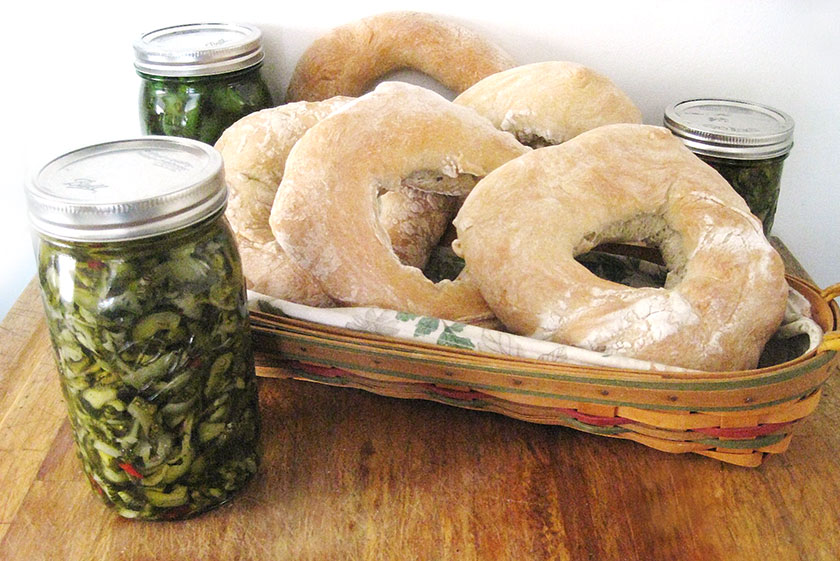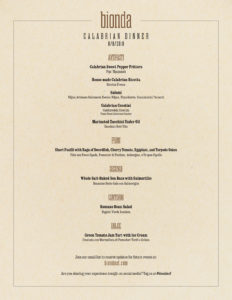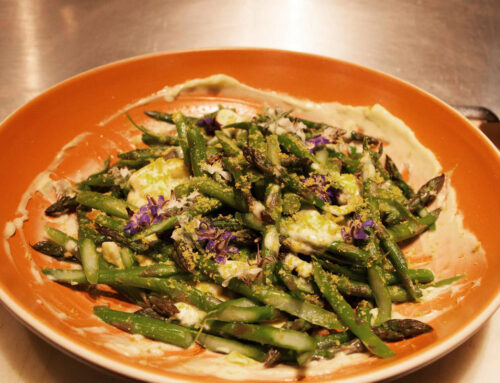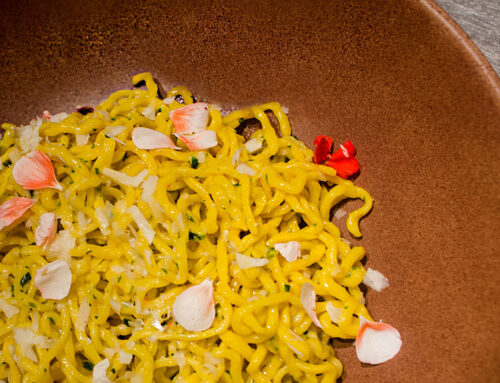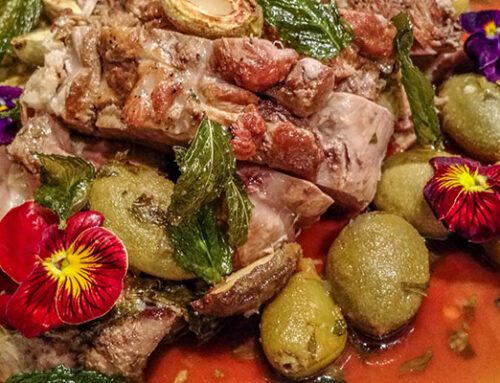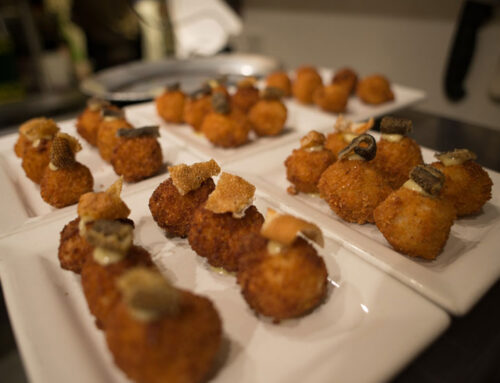EVENT DATE: AUGUST 8th, 2016
The region and its flavors
The flavors in Calabria, as in many other parts of southern Italy, speak to its past.
Throughout history, Calabria was ruled by many different groups: Enotrians, Greeks, Byzantines, Lombards, Normans, Swabians, Angevins, Aragonese, Spanish, and Bourbons. Like much of southern Italy, the people of Calabria experienced a period where they were disconnected from the riches, infrastructure, and trade of the North. In 1861, at the time of Italy’s unification, only one road traveled to Calabria from Northern Italy, and most towns were isolated. To make conditions even more difficult, the region experienced an exodus throughout the nineteenth and twentieth centuries, with men leaving to find work in North or South America—and many of them did not return.
Despite the challenging economic conditions throughout Calabria, spices and other ingredients from the trading ports of Liguria and Venice traveled to Calabria, and chefs used their creativity to work with fewer ingredients.
Conditions began to improve in Calabria in 1974, when roads were built connecting mountain villages, and a more than 300-mile highway was completed, connecting the region to Naples. The end of isolation meant that Calabria began to realize its economic potential, leading to commercial development and tourism beginning in the 1970s. Despite its greater prosperity today, Calabrian cuisine still speaks to its humble past.
Let’s take a closer look at the menu…
Antipasti
Calabrian Sweet Pepper Fritters, Pipi ‘Mpajanati, Calabrian Sweet Pepper, Anchovy, Seaweed Fritter
Calabrian chefs are experts at making produce last through the winter, by drying, salting, fermenting, or preserving their summer harvest under olive oil. Calabria’s climate is ideal for growing several different types of peppers and Calabrians adore anchovies, sardines, and mackerel (know as pesci azzuri, or blue fish). For this dish, I used a Calabrian sweet pepper, which has a paprika aroma, by drying it, rehydrating it with cured anchovies, and dipping it in a yeast-risen fry dough in which I added two local Bay Area seaweeds.
Housemade Calabrian Ricotta
Ricotta Fresca
Calabrian cheese is most often made using pasta filata—draining pecorino or other harder cheese whey, and cooking it in hot water until it can be stretched and pulled. While other chefs might throw away the whey, Calabrians found an inventive use for it. In this presentation, I used cow’s milk, instead of the more common, sheep’s milk, to make the ricotta.
Salumi
Ndjua Artisans Salumeria Iberico Ndjua, Finochietta, Cacciatorini Piccanti
Cured meats are significant to the Calabrian diet. For rural families, salumi stored in the cellar was once insurance against hardship. The salumi and nduja used for this dish comes from one of Chicago’s best salumeri, founded by Southern Italian immigrants.
Marinated Zucchini Under Oil
Zucchini Sott’Olio
Zucchini Preserved in Oil With Hot Pepper, Garlic, and Mint
Preserving vegetables under oil is one of the great joys of my life. Taking a humble vegetable like overgrown (weighing three to five pounds) zucchini, marinating it, then dehydrating it into a product that loses half its weight in water with tons of flavor, is amazing. You can even taste my preserved zucchini at home.
Primo
Short Fusilli with Ragu of Swordfish, Cherry Tomato, Eggplant, and Torpedo Onion
Filei con Pesce Spada, Pomodori di Pachino, Aubergine, e Tropea Cipolla
Fusilli is the signature pasta of Calabria. Unlike the corkscrew-shape that many manufacturers call fusilli, Calabrian fusilli are hollow, spaghetti-length strands made by rolling the fresh dough around a knitting needle. Like other parts of southern Italy, eggs are reserved for special occasions, or eaten as a protein and are not used for pasta, as in my version, which was prepared the traditional way with only flour and water. Pasta is a first course in Calabria, as elsewhere in Italy and antipasti only precedes pasta when there is a special occasion. Pasta is also the largest course in terms of volume and, historically, the main source of calories.
The Ionian and Tyrrhenian Seas surrounding Calabria once yielded incomparable tuna, swordfish, anchovies, and sardines, as well as octopus, cuttlefish, scallops, shrimp, clams, and mussels. However, as Calabrians established hilltop settlements and cut down forests to clear land for farming, they unwittingly harmed the coastline as it became marshy and malarial, due in part to the erosion from the mountainsides that disrupted river flows and created swamps in the plains. Today, there is little commercial fishing along the Ionian coast, and Tyrrhenian Sea.

